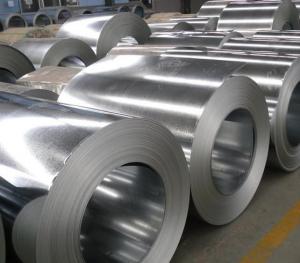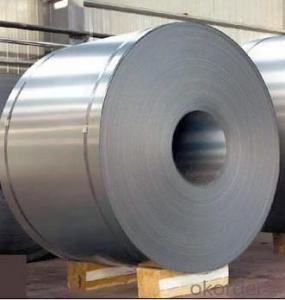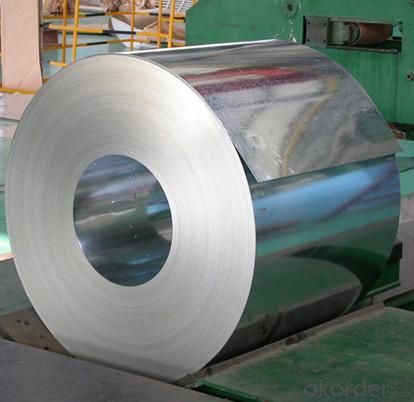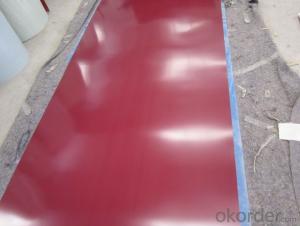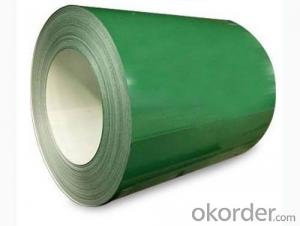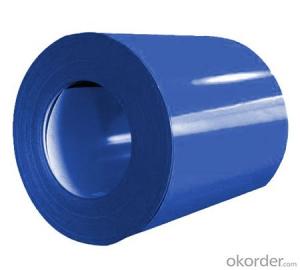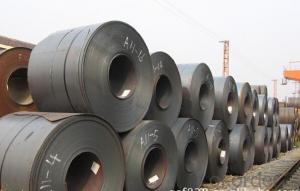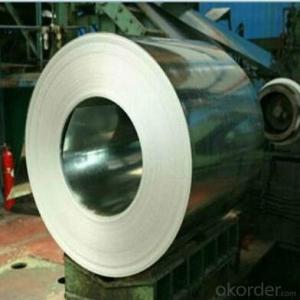Dx51d Grade Galvanized Steel Coils with CE Approved
- Loading Port:
- Shanghai
- Payment Terms:
- TT OR LC
- Min Order Qty:
- 25 m.t.
- Supply Capability:
- 10000 m.t./month
OKorder Service Pledge
OKorder Financial Service
You Might Also Like
Basic Info.
Model NO.:DX51D, SGCC, DX52D
Type:Steel Coil
Technique:Hot Dipped
Standard:ASTM, AISI, GB, JIS, DIN, BS
Surface Treatment:Galvanized
Special Use:Wear Resistant Steel
Application:Ship Plate, Container Plate
Thickness:0.13-4mm
Width:600-1500mm
Zinc Coating:60-275G/M2
Grade:Dx51d, SGCC, Sgch, A653, Dx52d, Dx53D
MOQ:5tons
Certificates:BV, SGS, ISO, CE, Ciq
Stock:Yes
Sample:Free
Spangle:Minimum, Zero, Big, Regular
Export Markets:Global
Additional Info.
Trademark:Sino Steel
Packing:Standard Seaworthy Export Packing
Standard:DX51D, SGCC, SGCH, A653
Origin:Shandong
HS Code:721049000
Production Capacity:1000 Tons/Day
Product Description
Specification:
1. Thickness: 0.11mm-3mm
2. Width: 600mm-1500mm
3. Length: According to client's demands
4. Inside Diameter: 508mm/610mm
5. Outside Diameter: 1000mm-1500mm
6. Coil weight: 3-8 tons
7. Payment: T/T, L/C, D/P, Paypal, Western Union
8. Trade Term: FOB, CFR, CIF
9. MOQ: 25 Mt
10. Package: Export standard package or as request
11. Shipment: By container
12. Standard: AISI, ASTM, BS, DIN, GB, JIS
13. Grade: SPCC/SPCD/SPCE/ST12-15/DC01-06
Our advantage
1. Certificate: ISO, BV, CE, SGS
2. Feedback within 24 hours
3. Best price from our own factory
4. Quick delivery
5. Stock and production
6. Cooperation with BAO STEEL and LAIWU STEEL
7. Experience for many years, specilized in manufacturing and exporting
8. Customers from many continents, such as North America, South America, Europe, Africa, etc
Take customers as the honoured, Take quality as the foundation!
Strive For Survival On The Basis Of Quality!
| Name | Galvanized steel coil |
| Standard | AISI,ASTM,GB,JIS |
| Material | SPCC/SPCD/SPCE/ST12-15/DC01-06. |
| Thickness | 0.13-4mm |
| Width | 600-1500mm |
| Tolerance | "+/-0.02''mm |
| Surface treatment: | galvanized |
| Coil ID | 508mm/610mm |
| Coil Weight | 3-8 tons |
| Technique | Cold rolled |
| Package | seaworthy package |
| Certification | ISO 9001-2008,SGS,CE,BV |
| MOQ | 25 TONS (in one 20ft FCL) |
| Delivery | 15-20 days |
| Monthly Output | 10000 tons |
| Description | The cold rolling reduces the thickness of the steel and at the same time changes the mechanical properties of the steel. Cold rolled steel must be further processed, as the steel will react with water in the air and form rust. In most cases, it is covered with a thin layer of oil to prevent oxygen reacting with surface. The steel coils can be annealed (heated in a controlled atmosphere) to make the steel more formable (cold rolled annealed) or further processed on the metallic coating line, with a coating of either zinc (galvanized) or zinc-aluminium alloy applied. Cold rolled steel is available in a range of grades, each with a range of properties for differing applications. |
| Payment | 30%T/T in advanced+70% balanced;irrevocable L/C at sight |
| Remarks | Insurance is all risks and accept the third party test |
- Q: How are steel coils used in the manufacturing of industrial filters?
- Steel coils are used in the manufacturing of industrial filters as a primary material for constructing the filter frames and support structures. The coils are typically cut, shaped, and welded to create the necessary framework that holds the filter media and allows for efficient filtration. The strength and durability of steel make it an ideal choice for withstanding the pressure and demands of industrial filtration processes.
- Q: This is my first time buying new strings for my violin and I’ve narrowed it down to two choice based on reviews and cost. The only difference I can see between the strings is that one has a solid steel core and the other has a synthetic core. What are the pros and cons of each type of core?
- Steel okorder /
- Q: Can steel coils be used in the manufacturing of machinery and equipment?
- Machinery and equipment manufacturing can indeed utilize steel coils effectively. These coils possess remarkable versatility and contribute strength, durability, and stability to various industrial applications. They can be manipulated to assume various shapes, receive cuts, and undergo formation to generate diverse parts and components that are indispensable to the manufacturing process of machinery and equipment. Gears, shafts, frames, brackets, and other structural elements are commonly produced using steel coils. Moreover, these coils can undergo further processing to fashion specialized components like springs or fasteners. By incorporating steel coils into machinery and equipment manufacturing, the end products are guaranteed to possess exceptional quality, capable of enduring heavy loads, and boasting an extended lifespan.
- Q: I am a complete idiot when it comes to anything musical, so please forgive me if this is a stupid question. I bought my son his first guitar, acoustic and didnt realize until after I purchased it that it has steel strings. Can I have the strings changed from steel to nylon???
- Haha, You're too cute for me. Did you buy Alex the guitar? Just wait until your boys become the next Jonas Brothers :)
- Q: How are steel coils used in the production of metal signs?
- Steel coils are used in the production of metal signs by being processed through a series of steps such as cutting, shaping, and welding. The coils are uncoiled and cut into the desired size and shape for the sign. Then, they are shaped using various methods like bending or rolling to achieve the desired design. The coils may also undergo welding to join different sections or add additional components to the sign. Overall, steel coils provide the raw material necessary for creating durable and sturdy metal signs.
- Q: How are steel coils used in the manufacturing of roofing materials?
- Steel coils are used in the manufacturing of roofing materials as they are rolled into sheets or formed into various shapes to create durable and long-lasting roofing products. The coils are processed through machines that cut, bend, and shape them into the desired dimensions and profiles required for different types of roofs.
- Q: What are the dimensions of steel coils used in automotive part manufacturing?
- The dimensions of steel coils used in automotive part manufacturing can vary depending on the specific application and manufacturer. However, commonly used dimensions for steel coils in automotive part manufacturing range from 0.5 to 3 millimeters in thickness and 600 to 2000 millimeters in width. The length of the coils can also vary, typically ranging from several meters to several hundred meters. It is important to note that these dimensions are not fixed and can be customized to meet the specific requirements of each automotive part being manufactured.
- Q: What are the different methods of joining steel coils?
- There are several methods of joining steel coils, including welding, mechanical fastening, adhesives, and interlocking systems. Welding involves fusing the ends of the coils together using heat or pressure. Mechanical fastening includes using bolts, screws, or other fasteners to hold the coils together. Adhesives can be used to bond the coils, providing a strong and durable connection. Interlocking systems involve designing the coils with special shapes or profiles that fit together, creating a secure joint.
- Q: What are the common applications of cold-rolled stainless steel coils?
- Cold-rolled stainless steel coils are widely used in various industries due to their unique characteristics and versatility. Some common applications of these coils include: 1. Automotive Industry: Cold-rolled stainless steel coils are used in the automotive industry for manufacturing parts such as exhaust systems, trim, and body panels. The high corrosion resistance and aesthetic appeal of stainless steel make it an ideal choice for these applications. 2. Construction Industry: Stainless steel coils are extensively used in the construction industry for roofing, cladding, and structural components. The durability, strength, and resistance to corrosion make cold-rolled stainless steel coils a preferred material in buildings, bridges, and other infrastructure projects. 3. Kitchen Appliances: Stainless steel coils are commonly used in the production of kitchen appliances such as refrigerators, ovens, and dishwashers. The hygienic properties, easy maintenance, and sleek appearance of stainless steel make it a popular choice for these applications. 4. Food Processing Industry: Cold-rolled stainless steel coils find extensive use in the food processing industry due to their non-reactive nature and resistance to corrosion. These coils are used for manufacturing equipment, storage tanks, and conveyor systems in food processing plants. 5. Medical Equipment: Stainless steel coils are widely used in the medical industry for manufacturing surgical instruments, implants, and medical devices. The biocompatibility, strength, and resistance to corrosion of stainless steel make it suitable for these critical applications. 6. Oil and Gas Industry: Cold-rolled stainless steel coils are used in the oil and gas industry for various applications, including pipelines, storage tanks, and offshore platforms. The high resistance to corrosion and extreme temperature conditions make stainless steel a reliable choice in this demanding industry. 7. Aerospace Industry: Stainless steel coils are employed in the aerospace industry for manufacturing aircraft components, engine parts, and structural elements. The lightweight yet high-strength properties of stainless steel make it an ideal material for these applications. Overall, the common applications of cold-rolled stainless steel coils span across diverse industries, including automotive, construction, kitchen appliances, food processing, medical, oil and gas, and aerospace. The unique combination of durability, corrosion resistance, strength, and aesthetic appeal make stainless steel coils a preferred choice in various industrial sectors.
- Q: okay i got some questions of the steel plow.1st - who inveneted it? where and when?2nd - how did it work? what is it used for? what is it made of? how is it produced?okay guys thank you very much. remember best answer gets best answer 10 points!
- If you're willing to substitute the word iron for steel (steel came a good bit later in history), the Girard plow from the 1300's in Belgium would be the first example known. It's named after the guy who invented it (Girard). How did it work? Like any other plow! You drag it along and it makes a trench of sorts in the ground! It was used for agricultural purposes. As for how it was produced, you need to look up the history of the Iron Age to understand how they started to use iron back in about 1200BC to make tools.
Send your message to us
Dx51d Grade Galvanized Steel Coils with CE Approved
- Loading Port:
- Shanghai
- Payment Terms:
- TT OR LC
- Min Order Qty:
- 25 m.t.
- Supply Capability:
- 10000 m.t./month
OKorder Service Pledge
OKorder Financial Service
Similar products
Hot products
Hot Searches
Related keywords
